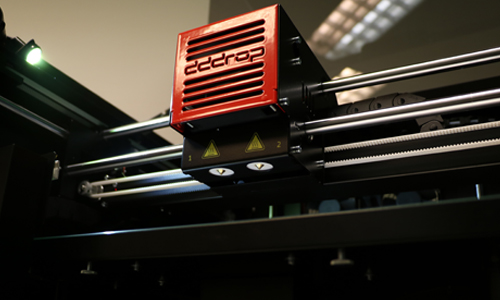All about the temperature
That the right temperature is very important in 3D printing needs no further explanation. The dddrop RAPID ONE is equipped with a closed chamber, to limit the influence of the environment. But you can imagine that if the temperature rises, it may be necessary to produce less heat or even to cool it, to get the same result. Especially if your printer is in a room without air conditioning, this is something to watch out for. Here are some tips to minimize the influence of external temperatures.

Change print bed temperature
If your printer is in a warm room, it can be useful to lower the temperature of your print bed a bit after printing the first layers. An example: when printing ABS, we usually recommend a print bed temperature of 120 ºC. If the room temperature exceeds 25 ºC, it is advisable to change the bed temperature to 100 or 110 ºC.
Ventilate with fans
Make sure the fans on the back of the printer are always on when printing in high temperatures. To cool down some more, you can speed up the fan in the print head after the first layers have been printed and the print head has warmed up. Change the fans – for example – from 40% to 60%.
Not too hot, not too cold
When temperatures outside rise, we often want to cool the inside temperature. This could be a pitfall, because the room temperature might get too cold for the printer. The printer needs a warm surrounding to make sure that the models are printed stress free and smooth. The temperature cannot be too high either, because this makes the filament weak, causing it to get stuck in the wheel. At dddrop we recommend a room temperature (between 21 ºC and 24 ºC) for the best print results with the standard print settings.
